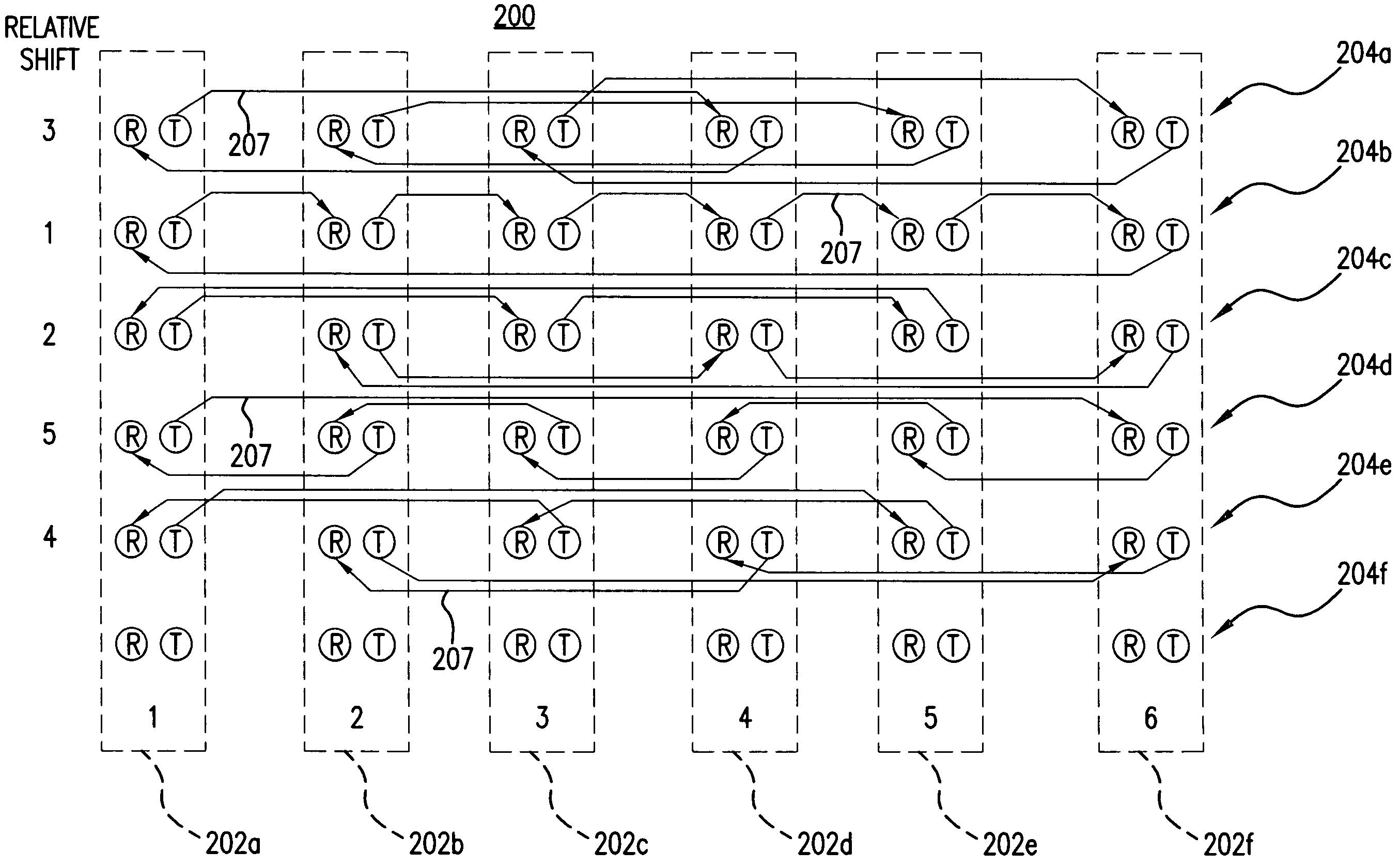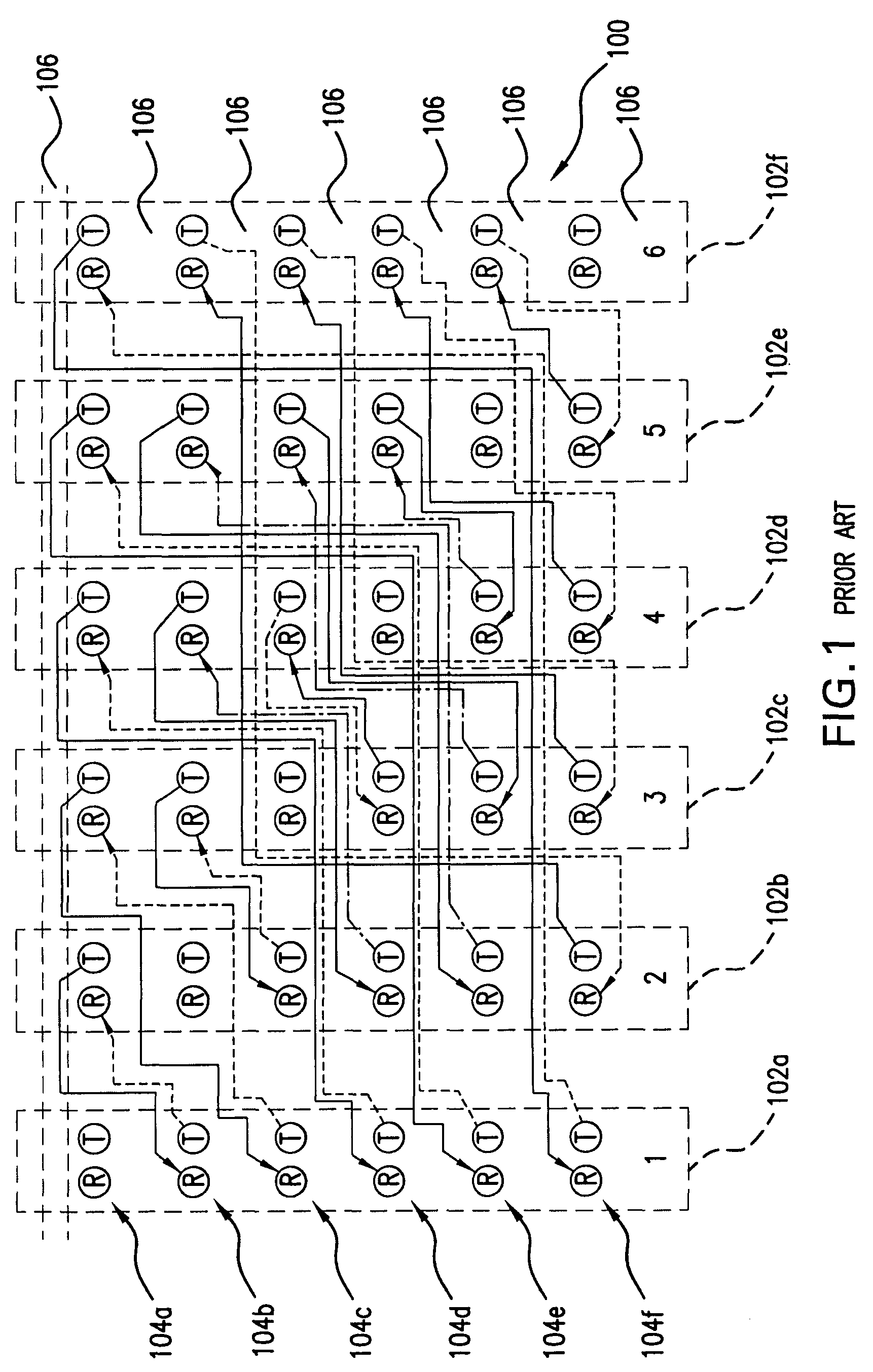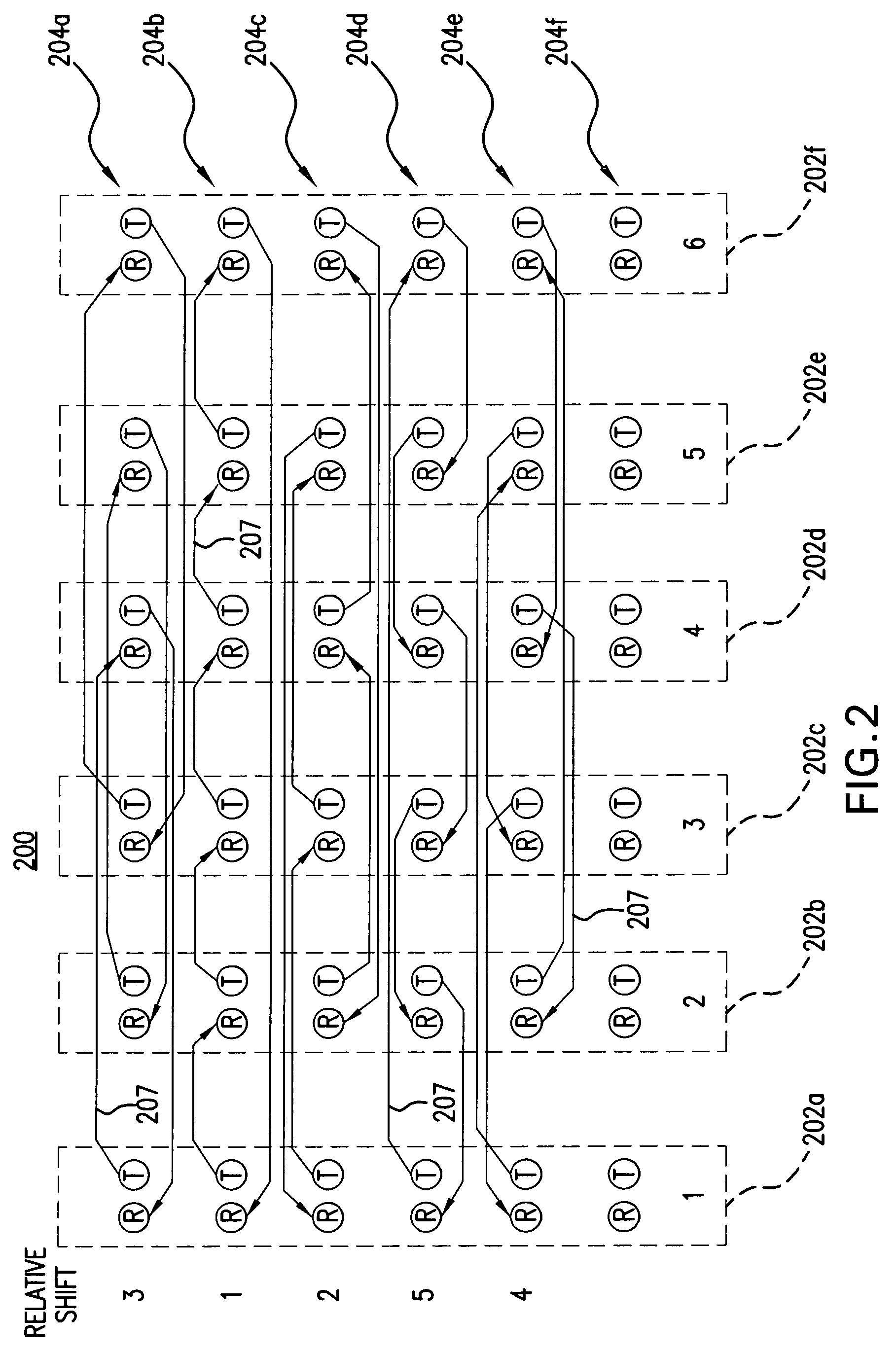Backplane configuration with shortest-path-relative-shift routing
a backplane and relative shift technology, applied in the field of large electronic systems, can solve the problems of limiting reliability, imposing practical limits of a few billion bits per second on the maximum system throughput, and preventing the creation of a truly universal platform. the effect of reducing the trace length of the backplan
- Summary
- Abstract
- Description
- Claims
- Application Information
AI Technical Summary
Benefits of technology
Problems solved by technology
Method used
Image
Examples
Embodiment Construction
[0018]FIG. 2 is a schematic block diagram of a preferred embodiment of a backplane system 200 in accordance with the present invention. Backplane system 200 includes six slots 202a–f. Each slot has six rows of connections 204a–f. A plurality of traces 207 interconnect the rows of connections. Each row 204 of each slot 202 includes two connections: one for receiving labeled “R” and one for transmitting, labeled “T.” As described above with respect to FIG. 1, “T” and “R” may both represent differential pairs.
[0019]Backplane system 200 is configured to form a full mesh. That is, each slot has a connection to every other slot. More specifically, a transmit / receive pair is provided for each slot to connect to every other slot. Five sets or rows of connections 204a–e are used to interconnect the six slots 202 in a full mesh. The sixth row of connections may be used for signals not required for the mesh. Notably, backplane system 200 does not have an area of congestion such as that between...
PUM
 Login to View More
Login to View More Abstract
Description
Claims
Application Information
 Login to View More
Login to View More - R&D
- Intellectual Property
- Life Sciences
- Materials
- Tech Scout
- Unparalleled Data Quality
- Higher Quality Content
- 60% Fewer Hallucinations
Browse by: Latest US Patents, China's latest patents, Technical Efficacy Thesaurus, Application Domain, Technology Topic, Popular Technical Reports.
© 2025 PatSnap. All rights reserved.Legal|Privacy policy|Modern Slavery Act Transparency Statement|Sitemap|About US| Contact US: help@patsnap.com



